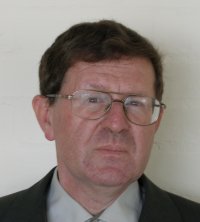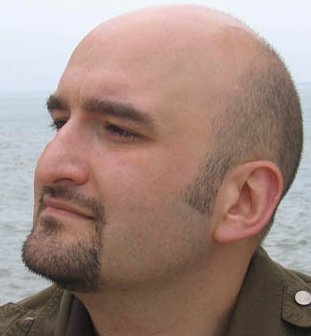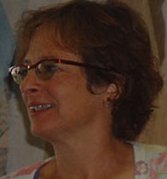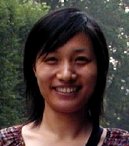|
Statistics and Probability Seminar Series -- Fall 2007
Thursday 4:00-5:00pm, Room MCS 149 (Tea served from 3:30-4:00pm, Room MCS 153)
September 20
 Mark Kelbert
Mark Kelbert
Mathematics Department,
Swansea University, Wales UK,
Cayley trees, with fixed or random branching numbers,
form a basic but important class of graphs, and random
processes constructed on Cayley trees are useful in
a broad variety of disciplines, including physics, computer
science, biology, economics and finance.
We attempt to present a number of results on Markov-type processes
on trees emerging from examples in the queueing theory,
reaction-diffusion equations and branching diffusion on
hyperbolic spaces.
September 27
Department of Mathematics and Statistics
Boston University
Over the last twenty years there has been considerable research on the so-called generalized autoregressive conditional heteroscedastic (GARCH) models. Different maximum likelihood methods for fitting the GARCH model to financial data based on various assumptions on the error distribution had been studied in the literature leading to a significant understanding of the properties of such estimators. One difficulty of implementing a fully parametric MLE for the estimation of GARCH model is the usual lack of complete knowledge of the error distribution for real financial data. Although, it is possible to get a reasonable understanding of the underlying volatility of financial data even under the misspecification of the error distribution, still it is too optimistic to expect any parametric estimator based on an assumed error model to be fully efficient. In this talk I will propose a new semiparametric estimator of GARCH model that allows more flexibility than fully parametric models. The estimation is carried out via a pseudo-likelihood approach, and we show that the proposed estimator is consistent and asymptotically normal with an asymptotic variance-covariance matrix identical to that of the true MLE. Issues related to the efficiency of semiparametric estimators in GARCH models will also be discussed.
October 4
 Jim Ramsay
Jim Ramsay
Department of Psychology and
Department of Mathematics and Statistics McGill University
We propose a new method for estimating parameters in models defined by a
system of non-linear
differential equations. Such equations represent changes in system outputs
by linking the behavior
of derivatives of a process to the behavior of the process itself. Current
methods for estimating
parameters in differential equations from noisy data are computationally
intensive and often poorly
suited to the realization of statistical objectives such as inference and
interval estimation. This
paper describes a new method that uses noisy measurements on a subset of
variables to estimate the
parameters defining a system of nonlinear differential equations. The
approach is based on a
modification of data smoothing methods along with a generalization of
profiled estimation. We
derive estimates and confidence intervals, and show that these have low bias
and good coverage
properties, respectively, for data simulated from models in chemical
engineering and neurobiology.
The performance of the method is demonstrated using real-world data from
chemistry and from the
progress of the auto-immune disease lupus.
October 11
 Zhiyi Chi
Zhiyi Chi
Department of Statistics
University of Connecticut
False discovery rate (FDR) control is a popular approach to multiple
hypothesis testing. However, the mechanism by which it works still
needs to be understood. I will show that under regular conditions, the
strength of evidence provided by data to identify true signals from noise
is limited, and hence in many cases no multiple testing procedure can
attain a good trade-off between power and the control of the so called
positive FDR. I will discuss two methods to improve power and pFDR
control, (1) testing at multiple locations in the domain of p-values; and
(2) in the presence of multivariate data for each hypothesis, testing
using multivariate p-values. I will also show how large deviations
principle can be applied to identify the minimum amount of data required
to attain a target pFDR control level.
October 25
 Giovanni Peccati
Giovanni Peccati
Laboratoire de Statistique Théorique et Appliquée (LSTA)
University of Paris VI
I will outline a general approach to the analysis of
functionals of stochastic processes, based on the notion of
path-dependence. The results I will discuss involve some new findings
in the theory of Hoeffding decompositions for sequences of
exchangeable observations, as well as some alternate "chaotic"
decompositions of functionals of Brownian motion. Strong motivations
for this analysis come from mathematical finance, and in particular
from the obtention of error bounds in the hedging of path-dependent
options. Some open problems will be also discussed.
November 1
 Giles Hooker
Giles Hooker
Department of Biological Statistics
and Computational Biology &
Department of Statistical Science, Cornell University
This talk examines the problem of data driven model building for systems thought to be described by nonlinear differential equations. I argue that lack of fit may be best represented as an unknown, smooth, additive input into these equations. Treating such inputs as a residual, standard diagnostic tools may be applied. The problem becomes less straightforward when only some components of a system are observed and I discuss approaches to dealing with this.
The standard model building paradigm, however, does not extend to more complex modeling choices such as the use of higher-order systems or extra components. I show that techniques from the field of Chaotic Data Analysis may be used to indicate where such choices are appropriate. These results also provide some cautionary lessons about the limitations of data-driven inference in these systems.
November 8
 Claudia Klüppelberg
Claudia Klüppelberg
Center for Mathematical Sciences
Munich University of Technology
We introduce a continuous-time GARCH [COGARCH(1,1)] model which, driven by a
single Lévy noise process, exhibits the same second order properties as the
discrete-time GARCH(1,1) model. Moreover, the COGARCH(1,1) model has heavy tails
and clusters in the extremes. The second order structure of the COGARCH(1,1)
model allows for some estimation procedure based on the ARMA(1,1)
autocorrelation structure of the model and other moments. The model can be
fitted to high-frequency data, and the statistical analysis also provides an
estimator for the volatility. The model shows certain similarities, but also
differences, to the Lévy-driven Ornstein-Uhlenbeck model. We also discuss
recent developments and extensions of our model.
November 15
 Al Ozonoff
Al Ozonoff
Department of Biostatistics,
Boston University
Although epidemiological methods often use only basic statistical theory, the applications of these methods may suffer typical problems of estimation (i.e. bias and imprecision). We will present some examples from public health surveillance where these problems do indeed arise. We will conclude with a discussion of stochastic simulations as a tool to investigate practical matters in applied biostatistics.
November 29

Constantine Gatsonis
Community Health and Applied Mathematics
Brown University
The potential utility of quantitative imaging results as markers for response to therapy and disease progression has recently attracted significant attention. A growing body of evidence suggests that quantitative measurements obtained by imaging modalities such as Positron Emission Tomography and Dynamic-Contrast MRI can be used to predict the likelihood of response to therapy and subsequent patient outcomes. Imaging findings, alone and in combination with other markers, may then be used to make decisions about the type and course of therapy, to assess response to therapy, and to monitor patients for potential relapse. In this presentation we will discuss the statistical aspects of studies designed to evaluate the role of quantitative imaging for clinical decision making and disease management as well as for defining intermediate endpoints in clinical trials of therapy.
December 7

Anna Liu
Department of Mathematics and Statistics
University o Massachussets, Amherst
A flexible and robust approach is proposed for the investigation
of underlying hormone secretion-generating mechanism.
Characterizing hormone time series is a difficult task as most
hormones are secreted in a pulsatile manner and pulses are
often masked by the slow decay. We model hormone concentration
as a filtered counting process where the intensity function of the
counting process is modeled nonparametrically using periodic
splines. The intensity function and parameters are estimated
using a combination of weighted least squares and
pseudo-likelihood based on the first two moments. Our method
uses concentration measurements directly which avoids the
difficult task of estimating pulse numbers and locations.
Both simulations and applications suggest that our method
performs well for estimating the intensity function of the
pulse-generating counting processes.
Joint work with Professor Yuedong Wang, Department of Statistics and Applied Probability, University of California, Santa Barbara Information on seminars from previous semesters may be found here: Fall 2005 | Spring 2006 | Fall 2006| Spring 2007.
|